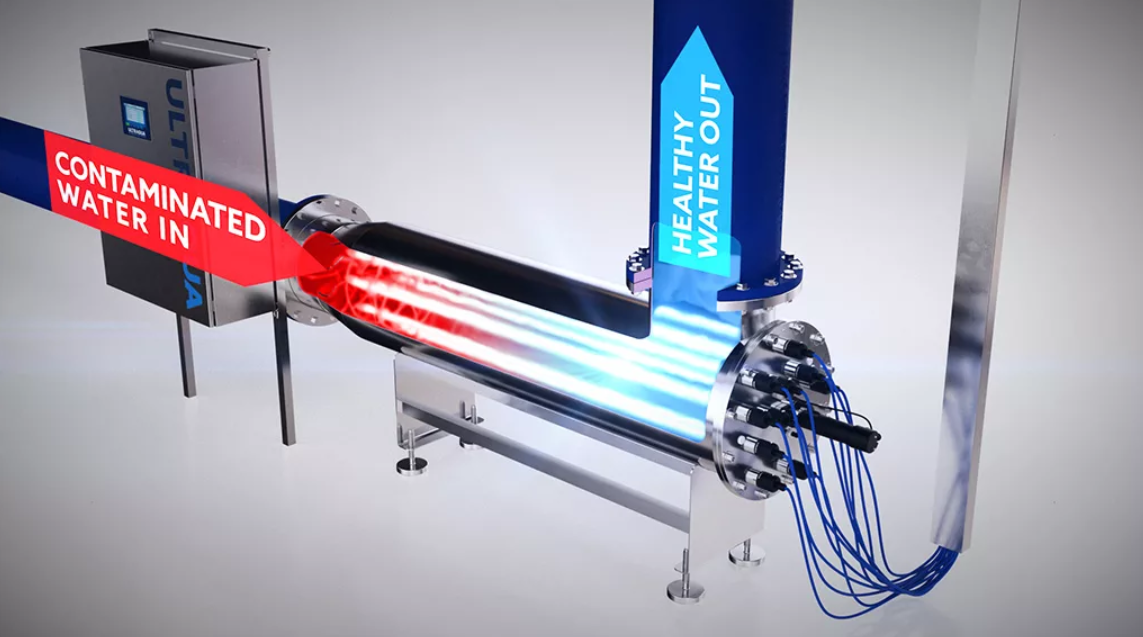
When to use a UV Disinfection System
UV Disinfection System is the best option any time your water contains bacteria or if you want extra protection in the event of a natural disaster. By the time your city water plant issues a boil water advisory, the water is already contaminated. Having a UV system keeps your water free of harmful viruses and pathogens when your water supply is compromised.
If you have a private well or your water is stored in a tank, you will need a UV water purifier unless you disinfect the water with chemicals. The well owner is responsible for removing bacteria from the water, and UV treatment is the most effective way. The UV purifier is an excellent pre-filter for well water before UV disinfection.
UV water purifiers for your home
UV systems are POE (point of entry), which means you install them before water enters your home to filter the water through them.
outside your home. Usually, typical household pressure is sufficient to operate a UV system. However, a flow restrictor must be used to ensure that water does not flow too quickly through the system. Water must be exposed to ultraviolet rays for a specified period before it is disinfected. If the flow rate is too high, the water will flow through the UV system too quickly to be considered safe.
UV water purifiers come in a wide range. The size of the UV system you need depends on your water flow rate. Sizing according to flow rate allows the water to contact the germicidal wavelength long enough to be effective. Like size, the price of UV systems varies.
How to maintain your UV water treatment system
UV water purifiers last for many years, but they require maintenance like any other water treatment system. However, UV systems are easy to maintain and are designed for continuous operation.
Replace the UV lamp once a year. These lamps use mercury vapor as fuel to ignite the ultraviolet wavelength. Over time, the mercury inside the lamp dissipates. The UV lamp lasts about 9,000 hours or 375 days (if you always turn it on).
Clean the quartz casing. The quartz glass casing surrounding the lamp must be clean for the UV lamp to work effectively. Check the quartz housing when changing the bulb to ensure it is clean.
Replace the quartz coating once every two years. Quartz sleeves are very fragile, so it is recommended to keep extra ones on hand in case an accident occurs.
Are UV Disinfection Systems necessary to filter water?
Water purification with this technology is not necessary for a water filter, but a water filter is necessary before the UV system. These systems are most effective when the water is clear, so they should have a pre-filter of at least five microns to prevent organisms from hiding behind loose particles. You can use a sediment filter to remove dirt and debris from a well water source or a water softener to reduce iron as a pre-filtration. A UV purifier is the last thing water passes through on its way into your home.
Test the water quality before using the UV system to ensure that the water does not exceed these levels:
Hardness <7 gpg (grains per gallon)
Iron <0.3 parts per million (ppm)
Manganese <0.05 ppm
Turbidity < 1 NTU (renal turbidity units)
Tannins <0.1 ppm

























